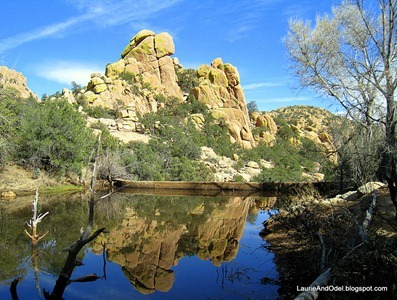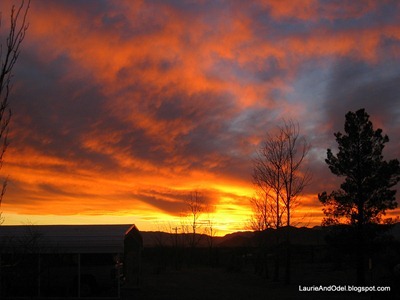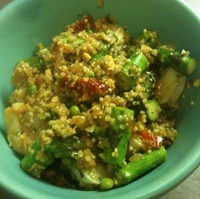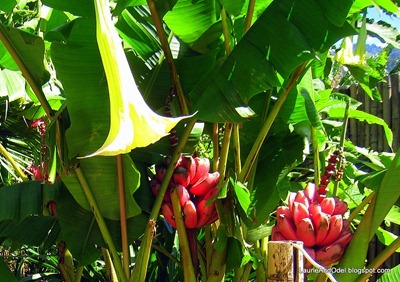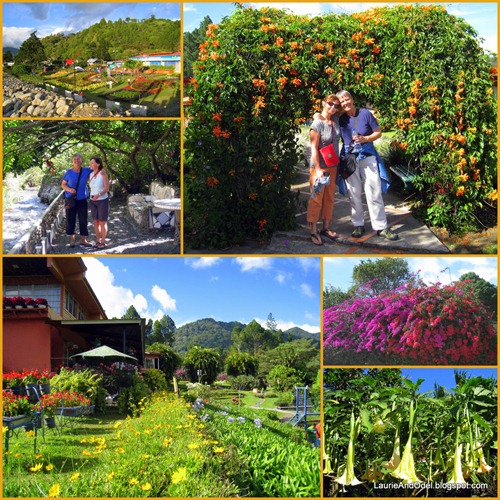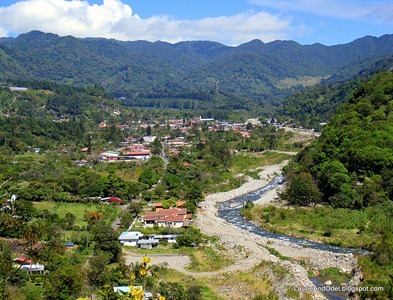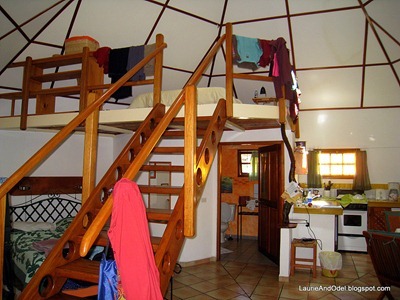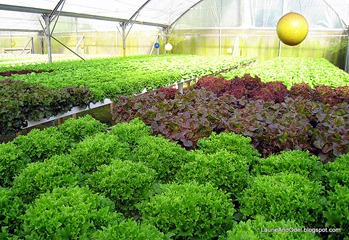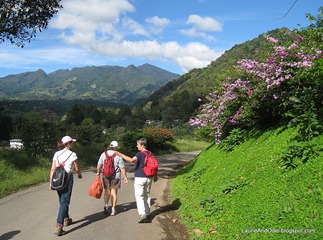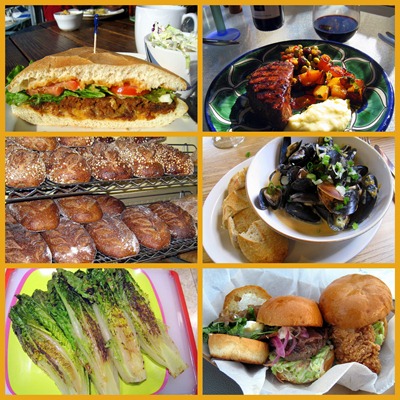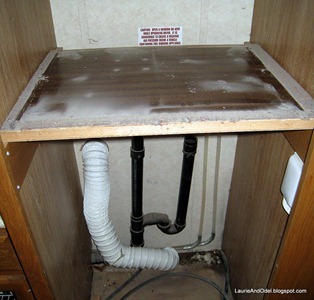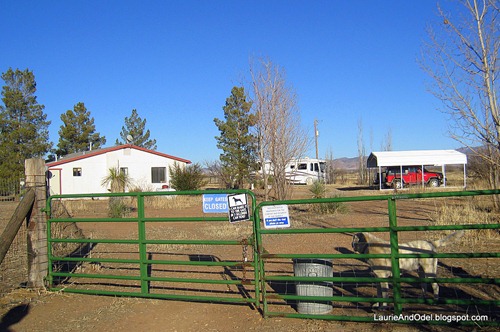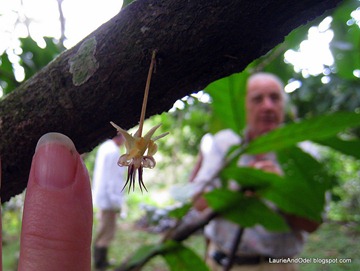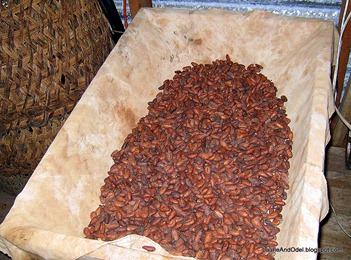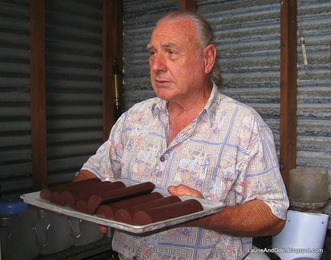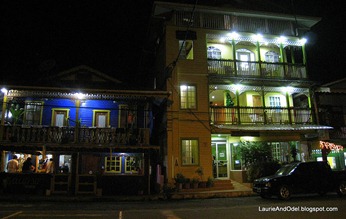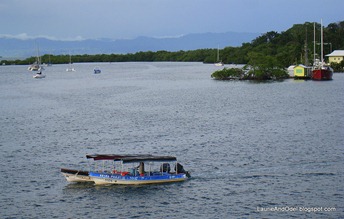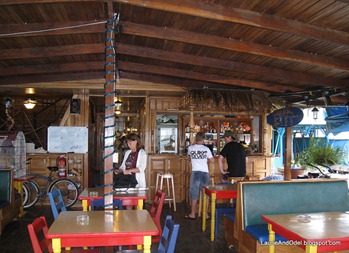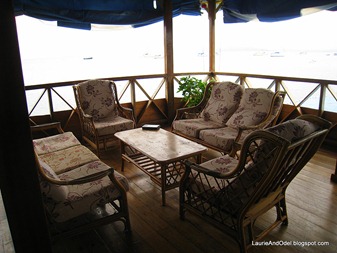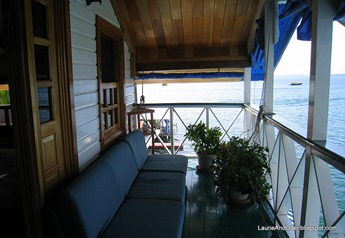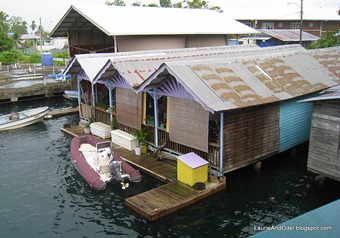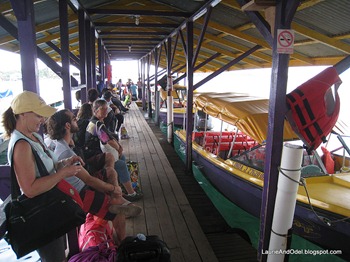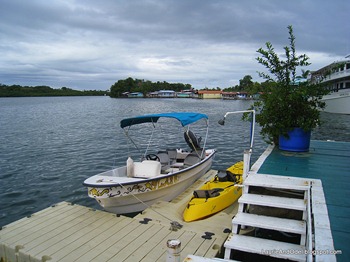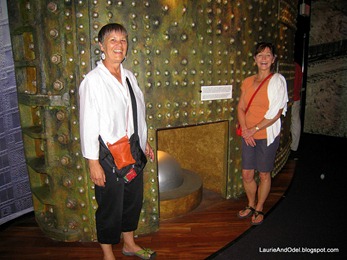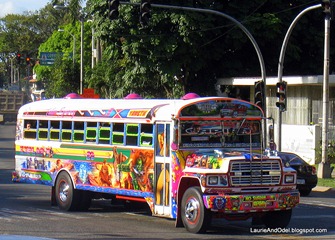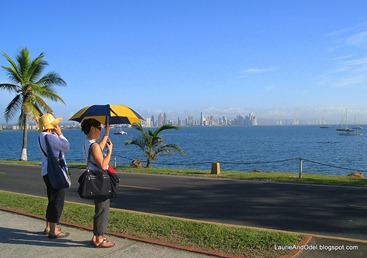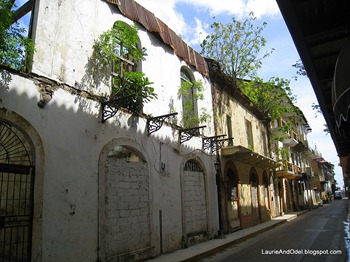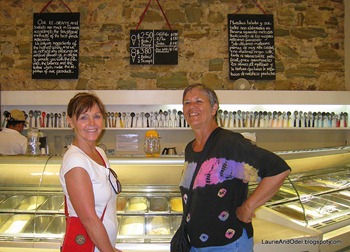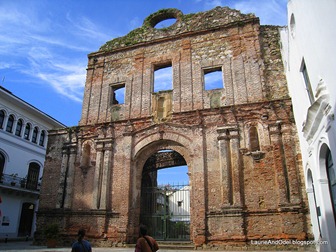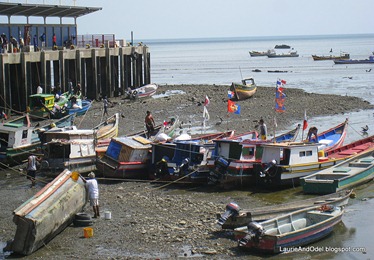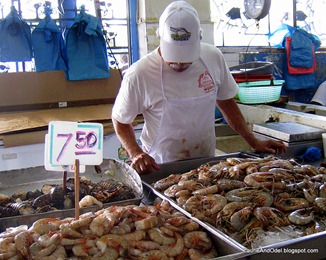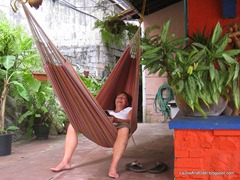CUPPING THE COFFEE: A TOUR, LEARNING TO ROAST, AND A BLIND TASTING
 Confession: I am a tea drinker! Still, when I found myself in Boquete, surrounded by some of the most highly regarded and rated coffee in the world, coffee became my caffeinated beverage of choice – you’d kinda have to be crazy to skip the coffee here.
Confession: I am a tea drinker! Still, when I found myself in Boquete, surrounded by some of the most highly regarded and rated coffee in the world, coffee became my caffeinated beverage of choice – you’d kinda have to be crazy to skip the coffee here.
Though there are several growers in the area, we chose to tour Finca Dos Jefes, where they label their coffee beans as “Cafés De La Luna”. Richard and Dee Lipner own the finca (ranch or farm), and Rich filled us in on their history in Boquete as he drove us the hillside from town.
Rich’s story: After 20 (or was it 25?) years running the Meals on Wheels program in Berkeley, CA, Rich and Dee were ready to settle into retirement. They set their sights on Italy, preferably the area around Lake Como. On the way there, they took a detour to visit a Panamanian friend who, after many years in the Bay area of California, had moved back to Boquete .
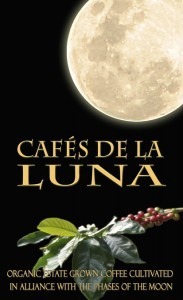 That was the end of their Italian dream – and the beginning of their new life in Panama. They found the abandoned coffee plantation, purchased it, and soon settled into “retirement” in Boquete. Since 2003, they have worked to rehabilitate the coffee trees, adopting organic growing methods in traditional alliance with the lunar calendar – hence their coffee label, Cafes De La Luna.
That was the end of their Italian dream – and the beginning of their new life in Panama. They found the abandoned coffee plantation, purchased it, and soon settled into “retirement” in Boquete. Since 2003, they have worked to rehabilitate the coffee trees, adopting organic growing methods in traditional alliance with the lunar calendar – hence their coffee label, Cafes De La Luna.
Our tour was small (we three friends and two young women from New York) and personalized. Rich gave us a good overview of the growing, harvesting and drying process as we walked a couple acres of his ranch. His “cherries” are hand harvested, then dried (intact) in the sun on raised racks. Once dried, the cherries are stored for a minimum of 3 months before they are peeled and the green beans removed, ready for roasting.
In the warehouse, Rich spoke of his sacks of dried, aging coffee as vintners speak of their casks of aging wine: the specific type of bean (Caturra, Catuai, Criollo and Gesha), the year it was grown, date harvested, weather and drying conditions. Sacks are marked with the information he will use to blend the final product. We’re not talking Folgers here!
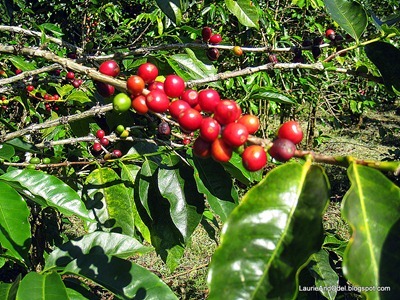 After we visited the storage warehouse, we headed off to headquarters for a lesson in coffee roasting and tasting. On a comfortable outdoor patio, Rich set a table with 3 empty cups for each of us, and we sat down to “cup” (taste) three roasts of coffee: light, medium and dark. We didn’t know which was which when we tasted, and I could only distinguish the light roast from the others – it was noticeably fruity, a citrus flavor I have never before associated with coffee. My uneducated taste buds said “It’s all yummy!”.
After we visited the storage warehouse, we headed off to headquarters for a lesson in coffee roasting and tasting. On a comfortable outdoor patio, Rich set a table with 3 empty cups for each of us, and we sat down to “cup” (taste) three roasts of coffee: light, medium and dark. We didn’t know which was which when we tasted, and I could only distinguish the light roast from the others – it was noticeably fruity, a citrus flavor I have never before associated with coffee. My uneducated taste buds said “It’s all yummy!”.
Our tour concluded with a lesson in coffee roasting (what an aroma!), followed by a traditional toast – using a thirst-quenching Panamanian beer – to the roaster (Miriam, one of the young New Yorkers along on the tour). Coffee was available to purchase, and we each received a 1/2 bag of the roast of our choice – which is now in Rosanna’s cupboard.
To take the tour yourself, make a fresh cup of your best coffee and take a look:

